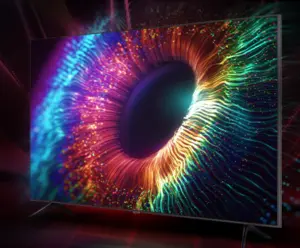There’s an interesting interview in TV Tech with Peter Sykes, strategic technology development manager at Sony UK, that raises some interesting points about the transition from HD to UHD in broadcasting, touching on the challenges and the innovations that are shaping the industry’s future. The transition from HD to UHD is highlighted as one that, while not immediately evident to every viewer, becomes a standard requirement for broadcasters. Sykes emphasizes the importance of producing content that stands the test of time, especially with top-tier events like sports. I hadn’t ever considered archiving as a specific reason to move to the best production formats but, of course, it makes total sense. UHD becomes the preferred choice to ensure content archived today remains relevant and visually appealing in the future.
A notable point raised by Sykes is the integration of new technology into existing workflows. Transitioning from HD SDR to UHD and HDR isn’t just about the equipment but also about training operators, camera shaders, and vision supervisors. The narrative around esports and high frame rates effectively demonstrates the changing demands of the industry. It shows that as viewing experiences evolve, so does the technology to support them.
The point about HDR being a system and not just a product serves as a reminder of the holistic approach needed in content production. It’s not just about one aspect being superior; all elements need to come together seamlessly. Interestingly, Sykes underscores the idea that with advancing technology, even local, smaller events can now avail the benefits of UHD and HDR, bridging the gap between high-budget broadcasts and grassroots content.
I am not sure about grassroots content. Color grading UHD content, for example, is both an art and a technical process. UHD, especially when combined with HDR content, has a wider range of detail in both highlights and shadows. Balancing this without losing detail or causing banding can be challenging. Higher resolution can make noise (grain) more apparent, especially when amplified during the grading process. Noise reduction techniques might be required, which can sometimes soften the image if not done correctly.
Maintaining color consistency across shots is always a challenge in color grading, but with the added detail of UHD, discrepancies can be more visible. Ensuring uniformity across scenes is crucial. UHD content often comes in a wider color space (like BT.2020) and a higher bit depth (10-bit or 12-bit). This offers more color information but also demands more precision during grading. Incorrect handling can result in artifacts like banding. To accurately grade UHD content, you’d ideally want a UHD reference monitor. However, true UHD color grading monitors can be expensive. Colorists might work on monitors that aren’t native UHD, which could compromise the accuracy of their grading decisions.
Putting aside the burdens on content creators, the resulting video has to be see on a display, and while HDR metadata is intended to maintain and convey the creative vision accurately, the inherent subjectivity in artistic choices, combined with the diversity in production and display technologies, makes it challenging to achieve absolute consistency in HDR representations across different displays. Not all displays are created equal but the industry seems to think that it can put check off feature list items and that’s all it takes. Variations in peak brightness, color accuracy, and contrast ratios among HDR-capable displays can impact how the content is visualized, sometimes leading to inconsistencies. We just want consumers to turn on their TVs and watch a movie in the best possible light, so to speak. That seems to be too much to hope for, and instead, we are asking consumers to become technicians, constantly adjusting their displays to match the content they pick. Something is wrong with this picture.
So, maybe, at some point in the future, when we have UHD HDR displays that are consistently meeting the highest standards, the content being archived today will be seen as it was intended to be seen.

